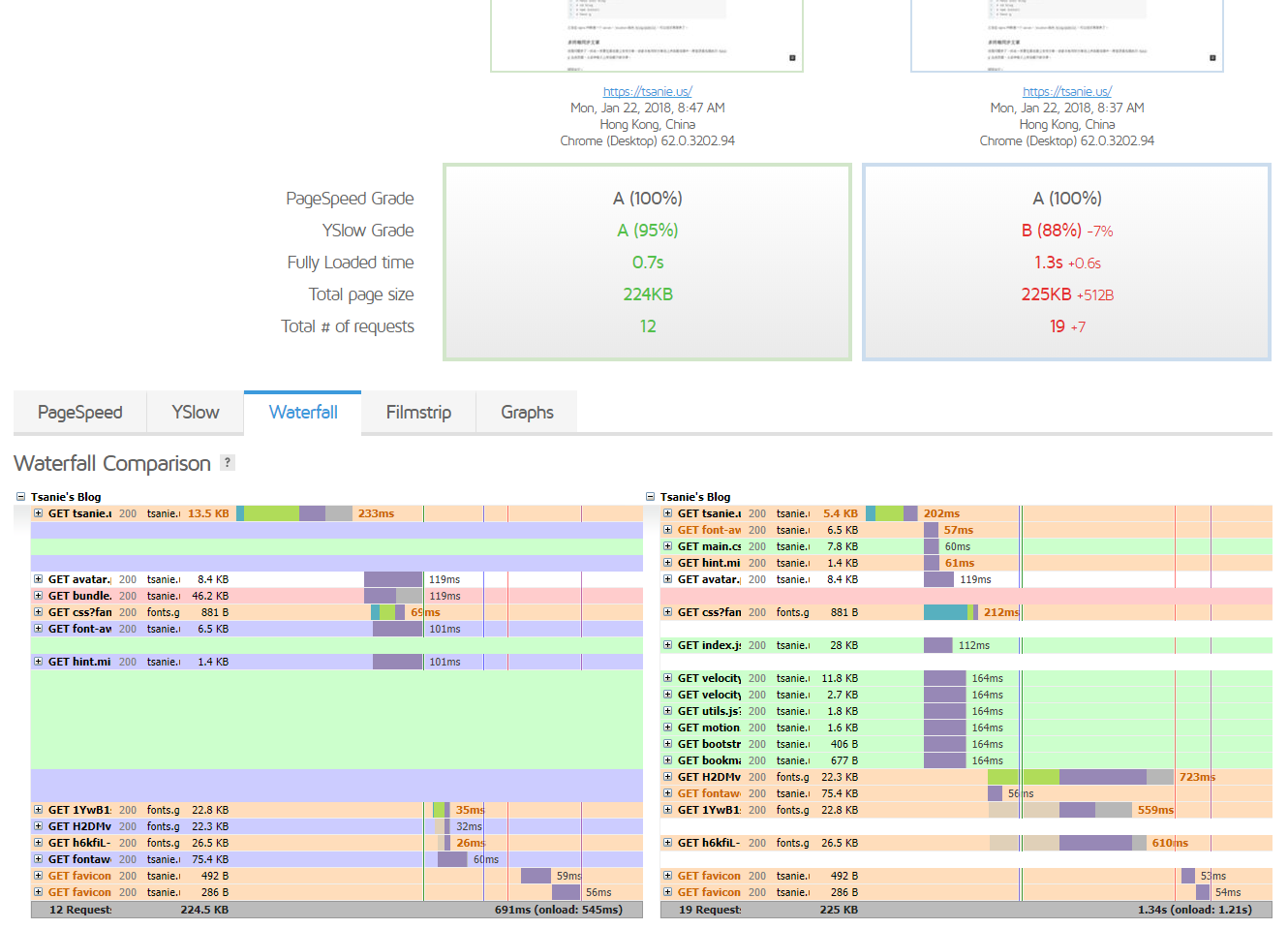A hexo plugin that optimize the pages loading speed.
It will automatically filter your html file, find the <link rel="stylesheet"> tag and make optimizations on demand, for example:
- Inline the
main.cssinto the html page, to speed up your site's First Contentful Paint. (Useful when HTTP/2 Server Push is not available on your web server) - Load CSS asynchronously or deferred.
It will help you get a higher score in the Google PageSpeed Insights.
npm install hexo-optimizeActivate the plugin in hexo's _config.yml like this:
filter_optimize:
enable: true
# static resource versioning
versioning: false
css:
# minify all css files
minify: true
excludes:
# use preload to load css elements dynamically
delivery:
- '@fortawesome/fontawesome-free'
- 'fonts.googleapis.com'
# make specific css content inline into the html page
inlines:
# support full path only
- css/main.css
js:
# minify all js files
minify: true
excludes:
# remove the comments in each of the js files
remove_comments: false
html:
# minify all html files
minify: true
excludes:
# set the priority of this plugin,
# lower means it will be executed first, default of Hexo is 10
priority: 12This plugin can be disabled by NODE_ENV in development to boost hexo generate:
export NODE_ENV=development
Here is a result from GTmetrix to show you the changes between before and after. (Same web server located in Tokyo, Japan, vultr.com)
- Remove query strings from static resources - let all the proxies could cache resources well. (https://gtmetrix.com/remove-query-strings-from-static-resources.html)
- Make fewer HTTP requests - through combined the loaded js files into the one.
- Prefer asynchronous resources - change the css delivery method using a script block instead of link tag.
- And TODOs ...






